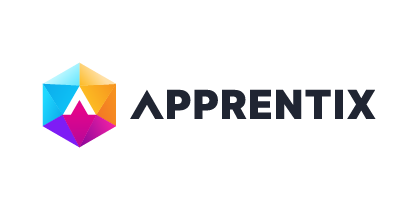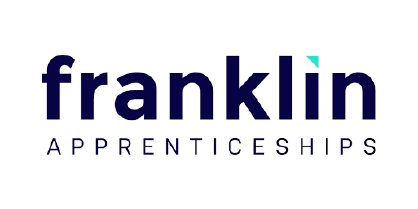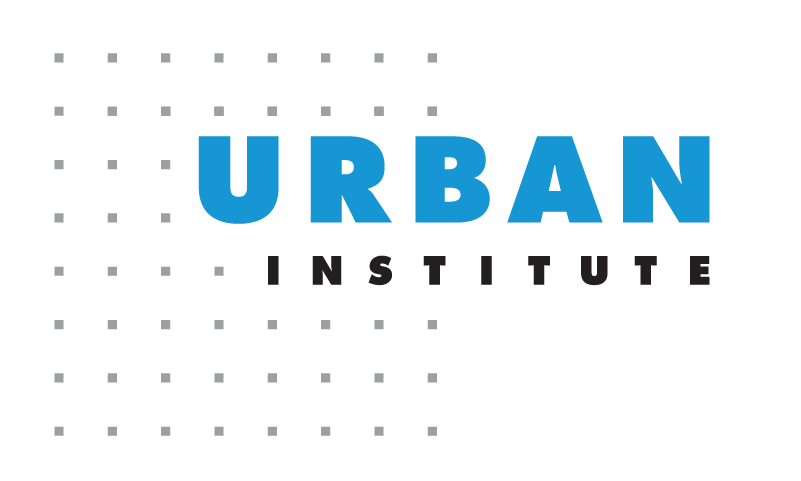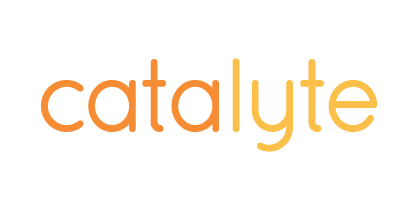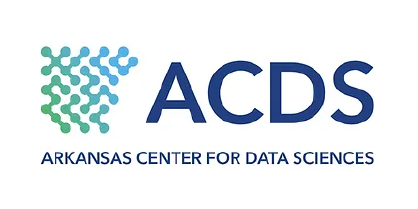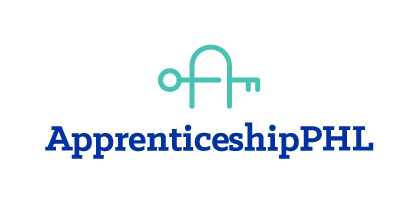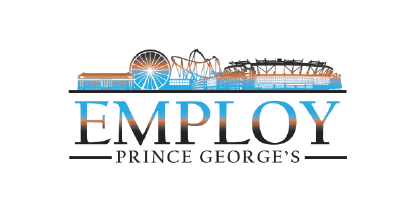Registered Apprenticeships
How to Build Digital Talent With Earn and Learn Training:
A Toolkit for Small and Medium-Sized Employers
Introduction
To be considered a Registered Apprenticeship, a work-based learning program must be approved by the U.S. Department of Labor (DOL) or a state apprenticeship agency, and it must combine paid on-the-job training with formal in-person or online classroom instruction. It should be designed to help participants build knowledge, skills, and competencies that are essential to success in a DOL-approved occupation. A Registered Apprenticeship culminates in an industry-recognized credential validated by the DOL or a state apprenticeship agency.
Typical Apprentice Profiles
-
Individuals seeking to move into a new career field
-
Experienced workers who want to advance in their careers
-
Young people who are just beginning their careers
Consider registered apprentices if you meet these three criteria:
-
You have a predictable, permanent, and long-term entry- or mid-level talent need (mid-level apprenticeship programs can be a great way to develop staff for open, high-demand opportunities);
-
You need skilled IT talent to fill openings for one or more of the DOL-approved occupations (applying to register an apprenticeship for an occupation that the DOL has not yet approved for Registered Apprenticeship might be too time-consuming for a small or medium-sized company)
-
You have the capacity to manage the entire program as the apprenticeship sponsor, or you can partner with other organizations to run the program jointly
The Upsides of Apprenticeships
-
Benefits to Employers
Here are five of the most compelling benefits of apprenticeship for employers:
Solid Returns on Investments
Employers see an average return of $1.47 for every $1 they invest in apprenticeship. Oregon Apprenticeship created an ROI calculator to help businesses determine the costs and benefits of Registered Apprenticeship.Access to a Pipeline of Local Talent With the Right Skills
Apprenticeship is a good option for employers that struggle to find workers with in-demand skills. With an apprenticeship program, you can tailor the training to ensure that workers build the skills and competencies you need most.Ongoing Employee Development
Ongoing advances in technology mean people in all lines of work must continually build new digital skills to succeed in today’s ever-evolving economy. If you offer an apprenticeship program, your employees have access to the training they need to keep their skills up to date. That means you don’t have to lay off current employees and recruit new ones to keep pace with technological advancements.Progress Toward Diversity, Equity, and Inclusion goals
Apprenticeships have become more diverse in recent years, and will likely become an increasingly diverse talent pipeline in the future.Strong Employee Retention Rates
94 percent of people who complete apprenticeships remain employed at the company for which they apprenticed six months after completing the program. Strong employee retention rates lead to reduced turnover costs. -
Benefits to Apprentices
Here are five of the most compelling benefits of Registered Apprenticeship for workers and learners. They’re pulled directly from the DOL list of key components a program must have to qualify as a Registered Apprenticeship:
Paid Training as Full-Time Employees
A Registered Apprenticeship is a full-time job, and participants in these programs receive competitive wages and the same benefits as other full-time employees. They also receive incremental pay increases as they reach benchmarks for mastering new skills.Real-World Experience
Registered Apprenticeship participants get practical, real-world workplace experience, and that means they stay on the forefront of technological innovations. The DOL has made training plans available for all approved Registered Apprenticeship occupations.Classroom Learning
Registered Apprenticeship programs also offer classroom instruction in subjects related to the industries in which they’re working. Your company can provide this instruction itself—either on site or online—or use the DOL’s partner finder to identify an education partner such as a community college that can assist with this element of the apprenticeship.Access to Mentors
Apprentices receive structured, one-on-one support and guidance from an internal mentor, and that gives them an opportunity to build professional social capital, which can play a key role in an individual’s ability to succeed in the labor market.Credentials
Registered Apprenticeship participants receive nationally-recognized industry credentials when they complete their programs. And ideally, they also develop strong relationships with their employers, which can lead to opportunities to continue on in full-time jobs.
SkillUp Career Builders say benefits are a critical part of a good job, and they told us that they appreciate forward-thinking employers who offer creative benefits, such as those that offered grocery gift cards or mental health benefits at the height of the pandemic. "When an employer offers more benefits than just the standard, that’s what makes the difference for me," said one Career Builder.
Partner to Reduce Costs
Apprenticeships offer substantial and proven ROI, and it’s important to know that the time and money you put into employee development will benefit your company. You can keep costs–in particular, upfront costs–down by partnering with a Registered Apprenticeship intermediary or sponsor. In addition to helping you save money, partnerships give you access to a network of collaborators whose capacity and expertise you can tap if you want to expand an apprenticeship program.
Partners can help with these activities:
-
Developing curriculum and designing classroom training, setting wages, and completing applications and paperwork
-
Recruiting and screening prospective apprentices
-
Registering the apprenticeship and obtaining program approval from the DOL or the state apprenticeship agency
-
Supporting diversity, equity, and inclusion efforts, which may include ensuring compliance with equal employment opportunity requirements and meeting affirmative action goals
Treat Apprentices as Employees
It’s important to create a sense of belonging among apprentices, and to make sure they understand that they are helping the organization achieve its business objectives. One way to do this is to give apprentices titles that are similar to those of permanent employees. Some employers use terms like “associate” or “junior talent” instead of “apprentice.”
Assess the structural components you already have in place and build on them. For example, you may already have the following:
-
A mentoring program
-
Onboarding practices that break learning into chunks or map learning goals to a timeline
Review the list of DOL-approved apprenticeship occupations. If an occupation you have in mind isn’t there, you can request that the DOL approve it, but that takes a lot of time and effort.
Use competency-based occupational frameworks (CBOF). Offered by the DOL in cooperation with the Urban Institute, CBOFs can ease the process of developing a Registered Apprenticeship program.
How Partners Can Help
There are many organizations that are willing to partner with you and help you build a high-quality apprenticeship program. Partners can help you set up a program quickly and efficiently If your company doesn’t have the capacity to run the whole program as an apprenticeship sponsor—meaning that they are responsible for the overall operation of the program—you can partner with an organization such as a business consortium, a trade association, or a community-based organization that’s sponsoring its own apprenticeship and hire the people they train.
This JFF resource explains the technical and functional differences between an intermediary and a sponsor.

Potential Partners
Supporting Intermediaries
(can provide resources, tools, and connections)
Training and Candidate Sources
(usually sponsors)
Public Workforce Systems
(can be sponsors or resources)
-
Techtonic

The Business and Its Earn and Learn Model
Founded in 2006 and now part of Bitwise Industries, Techtonic was provides software development services and runs a DOL-approved Registered Apprenticeship program in software development. Techtonic apprentices serve on the teams that work on client projects, and clients have the opportunity to hire the apprentices when projects are finished. Techtonic apprentices have regular check-ins with their managers and mentors, get real-world work experience through the client engagements, and free access to an online training platform that they can use to learn new coding languages and study other topics.
Keys to Success
Techtonic promotes apprenticeship as a talent solution that’s especially effective for companies in the software industry, because software development roles lend themselves to structured learning and on-the-job training—two core elements of the apprenticeship model. The fact that clients can get to know Techtonic apprentices throughout the course of their projects gives the apprentices an advantage in the job market, especially in an industry where employers can learn much more about a worker’s abilities while observing them work for six months than they would in a job interview.
Outcomes and Impact
Techtonic says training people in apprenticeships is a more efficient way to build talent than recruiting people externally. With its first apprentice, the company saw a return on investment in six months. The company says it saves time and money with apprenticeship because it doesn’t have to hire recruiters or interview a lot of candidates when filling junior and mid-level positions.
-
RTriad Enterprises

The Business and Its Earn and Learn Model
A Greensboro, North Carolina-based provider of cloud computing services to businesses, RTriad Enterprises set up a Registered Apprenticeship program with the help of its state apprenticeship agency, ApprenticeshipNC. The company only has about 12 employees and credits the success of its apprenticeship program to its partnership with the agency. For its part, ApprenticeshipNC says the key to success was the fact that both parties knew their roles: RTriad knew its business, strategy, and operating needs, and ApprenticeshipNC knew the details of setting up and registering an apprenticeship. As Tiffany Jacobs, ApprenticeshipNC’s apprenticeship regional coordinator for North Carolina’s Piedmont Triad region, said, “My job is to make sure I’m providing resources that align with [the business’s] goals. . . . Whatever you have in place at your company, we want to help enhance that and not reinvent the wheel.”
Tips for Success
RTriad’s partnership with ApprenticeshipNC didn’t cost anything, so its investment primarily involved time and staff capacity. RTriad President and CTO Kevin Robinson said ApprenticeshipNC was “able to move at the speed of the IT industry” and helped RTriad get the program set up quickly. RTriad’s success with apprenticeship is due in large part to its commitment to and understanding of the apprenticeship model. For example, one of the keys to attracting and retaining talent in the tech industry is to show candidates a clear career path at the organization, which apprenticeship is naturally designed to do.
Outcomes and Impact
RTriad employees are passionate about diversifying the tech industry, and they say apprenticeship plays an important role in helping them recruit and train people from a wide range of backgrounds, especially members of populations that aren’t well represented in tech. They point out that the apprenticeship program gives people a chance to build skills and develop social capital by interacting with and learning from experienced tech professionals on the job.
Resources

U.S. Department of Labor
The Federal Resources Playbook for Registered Apprenticeship

Interest Form
JFF Apprenticeship Support

Greater Cleveland Partnership
Apprenticeship Program Toolkit

Urban Institute
Setting Wages in Your Registered Apprenticeship Program

U.S. Department of Labor
A Quick Start Toolkit: Building Registered Apprenticeship Programs
Learn More About These Common Earn and Learn Models, and Find Out How to Create Your Own
Stay in Touch
No matter the stage in your Earn and Learn program journey, we’re here to help.




